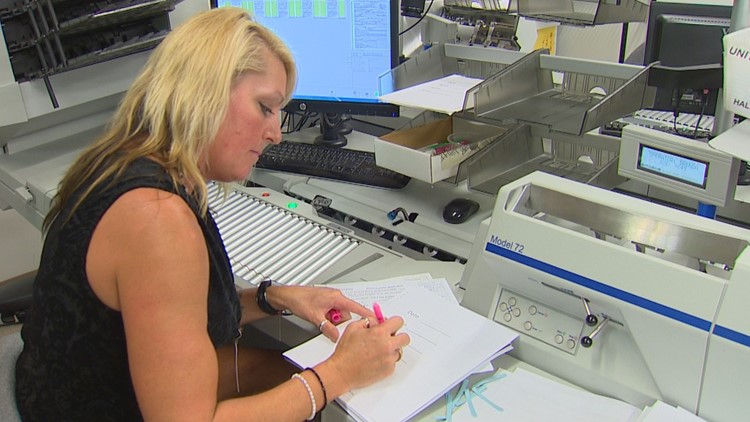Records that law enforcement say are vital to public safety are stuck in limbo, unavailable to the criminal justice system because of the low-tech methods used to enter them into a Washington state firearms database.
As of August, more than 525,000 handgun purchases had not yet been entered into a database maintained by the Washington State Department of Licensing (DOL), which is supposed to keep those records up to date for law enforcement purposes.
The backlog means that pistols purchased at Washington gun stores as far back as three years ago have not been entered into the system.
“To have a good, robust, updated system is really important to law enforcement and I think public safety, as well,” said Steve Strachan, executive director of the Washington Association of Sheriffs and Police Chiefs (WASPC).
Every time a gun is purchased, or “transferred,” in Washington state, a licensed firearms dealer conducts the required background check. For handgun transfers, the gun dealer is required to send information about the firearm and the new owner to DOL.
Each month, DOL receives up to 15,000 handgun transfer forms which are then scanned into digital images. After that process, the records-keeping hits a bottleneck.
The scanning system used at the department can’t automatically convert the forms to digital records, meaning state employees must manually type much of the information into the database that law enforcement and the courts can query and search for records.
“It’s a very manual process of bouncing back and forth,” said DOL employee Neil Lutterman as he typed information from a scanned computer image on one screen into a database template displayed on a second screen.
“For a really fast individual, it could take about two-three minutes,” said Lutterman.
That’s two-three minutes per form.
It’s a battle that DOL employees have not been able to win as the records backlog has continued to grow – rising from 327,753 forms in December 2016 to well past the half-million mark in August.
If every form took two minutes to enter, the backlog would take 1 million minutes to clear. By KING’s estimate - 10 full-time employees dedicating a total of 200 hours per work week - the backlog alone would take more than 18 months to clear.
WASPC says police officers routinely access the database when working investigations. For example, it’s part of the “risk assessment” officers conduct before they serve a warrant.
“When officers are going to go out and execute a search warrant or go out to serve an arrest warrant on somebody, they will frequently check to see if that person has ever purchased a firearm or a handgun. So at least they have some idea if they have a handgun before they go encounter that person,” said Strachan.
In courtrooms, the database may be accessed in domestic violence cases. Judges and prosecutors can use the information to help determine if a person has met a requirement to surrender all firearms to police. DOL’s database is used to try to determine how many guns the defendant owns.
“If they are clearly so dangerous that a court has issued a protection order against them, there should be a good system to keep them from buying and possessing a firearm. A backlog really works completely against that concept,” Strachan said.
The database has faced opposition from gun rights groups and some Washington lawmakers who believe that tracking gun ownership violates the Constitution’s Second Amendment.
As the backlog has grown over the last few years, Washington lawmakers have not taken action to help DOL – until now. Quietly during the last legislative session, lawmakers approved more than $300,000 in funding to try to tackle the backlog.
DOL Firearms Program Administrator Jennifer Richards says the agency has begun testing software that reads the scanned images of pistol transfer forms. The software “captures” the text and extracts the information on the document so that it can be uploaded to the database.
The automation means that employees might spend 20 seconds per document, instead of two or three minutes.
Even so, no one is making a guess on how long it will take to bring the records system up to date.
“I think it will take some time. The numbers are just large,” said Strachan.
Follow Chris Ingalls on Twitter: @CJINgalls.



